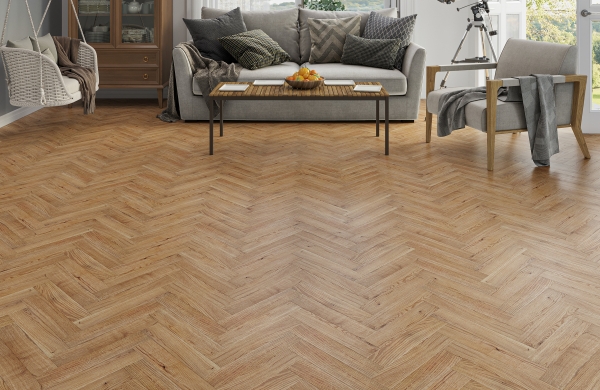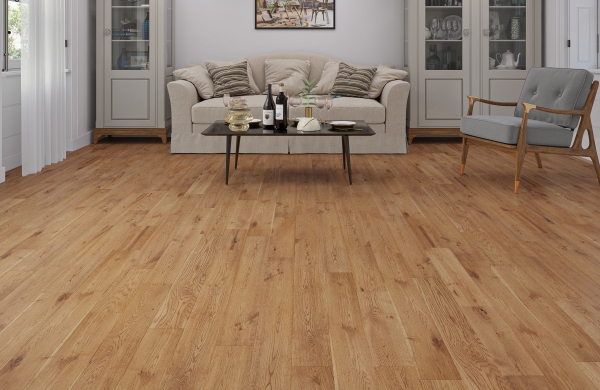Tongue and Groove Solid Wood Flooring
Tongue and groove solid wood flooring is a type of flooring that uses the most common joining method; each board in tongue and groove flooring has a protruding tongue on one side and an indented groove on the other, so it fits easily with the board next to it. The tongue and groove format is the most cost effective fitting method, a good deal cheaper than the newer and more sophisticated "click" system, which is one of the main reasons that it is more commonly used. Because it is the most common installation method, there are also far more types of wood available with tongue and groove.
Tongue and groove solid wood flooring also gives the installer options when fitting the floor. In general, there are three different ways to fit a floor using the tongue and groove system. Which method the fitter chooses will depend on the site conditions and the amount of foot traffic the flooring will have, once completed.
The first and most common fitting method consists of fitting the boards together, laying them on top of the underlay and gluing their joints together to prevent them from moving. This is known as a "floating" floor because the wood planks are not glued down to the underlay.
If the subfloor is concrete, the installer may use another method, in which the wood flooring is glued down to the layer below; this is an additional measure that prevents the floor from moving or shifting under foot traffic.
The final option for fitters is to nail the floorboards to the subfloor. This is typically done using a "secret nail" technique where the nails are placed at a 45 degree angle to the groove, so they are not visible from above. This is also an effective method for keeping the wood floor in place and may be necessary for rooms with more foot traffic.
Tongue and groove flooring is a particularly easy fitting method for professional fitters, and can even be used by reasonably experienced DIY floorers. Each plank is designed to fit easily with the one next to it, and it's a matter of simply slotting the boards into one another. Since it is so simple and easy, many people opt to fit tongue and groove solid wood flooring themselves.
As with any wood flooring, tongue and groove boards require a solid, quality underlay, so that the joints of the wood boards are supported. That way, the lifetime of the wood flooring can be extended by as much as 15 years. For that reason you may want to install a new subfloor before starting to install tongue and groove solid wood flooring.
If you do so, it is highly recommended to put in a concrete subfloor with what is called a "damp proof membrane" (DPM). This prevents damp from rising through the subfloor and damaging the wood flooring on top.
As long as you take the proper precautions, your tongue and groove solid wood flooring can last you the rest of your life without needing to be replaced.
For all other joining methods for solid wood flooring please click here: Solid Wood Flooring

































